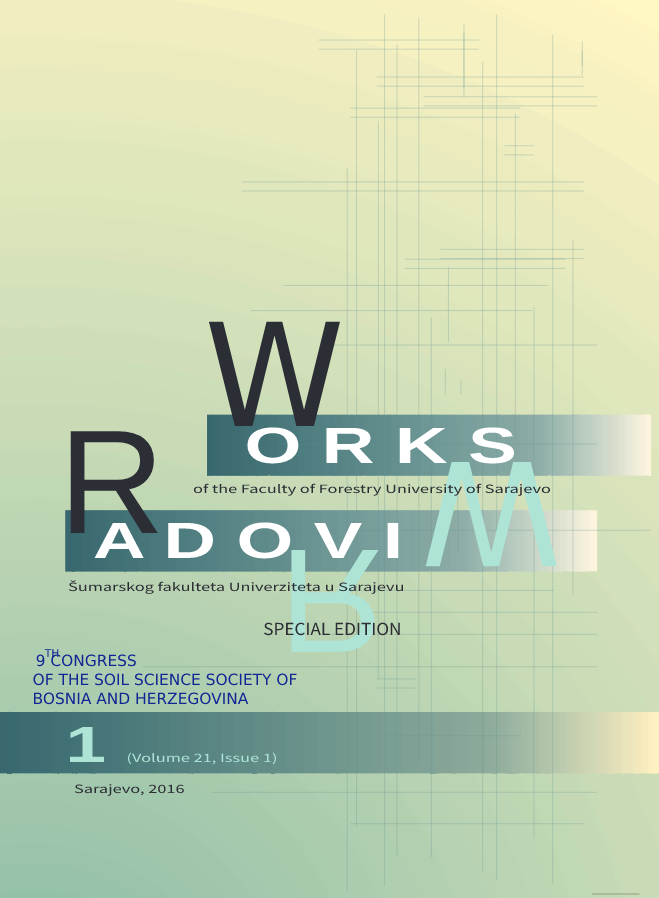SENSITIVITY OF LAND TO CLIMATE CHANGE AND SUSTAINABLE DEVELOPMENT IN THE SUBMEDITERRANEAN KARST AREA OF BOSNIA AND HERZEGOVINA
DOI:
https://doi.org/10.54652/rsf.2016.v1.i1.283Ključne riječi:
karst, relief, soil types, climate change, aridity indexSažetak
UDK 631.4:551.583(497.6)
The value of the landscape in the karst region of Bosnia and Herzegovina (B&H) is the foundation of its existence and the key role in its appearance and formation is played by geomorphology and the soil. Through history the man has created a „cultural landscape” which is completely adapted to the natural conditions. He further enriches the space and makes it more appealing. Soils in B&H karst are extremely heterogeneous and form a real pedological mosaic. Found on the Mesozoic sediments of limestone and dolomite of the Middle and Upper Jurassic and Early and Late Cretaceous are Bare rocks (barren land), Rocky grounds (Lithosol), Limestone-dolomite Black soil (Calcomelanosol) and Brown soil on limestone and dolomite (Calcocambisol). A specificity of these rocks are the screes that are transported down the hillside. A series may occur on them in which, if shale materials are contained, Rendzina appears as a calcareous soil. In addition to the above mentioned limestone and dolomite, there are marly limestones of Jurassic and Cretaceous age and Quaternary sediments on which Alluvial soils (Fluvisol) developed as well as the soils of karst fields which are sometimes very porous and skeletal and sometimes heavy and clayey on impermeable substrate (hydromorphic soils).
The paper will provide an overview of characteristic soil types in the Sub-Mediterranean upper and lower karst region of B&H taking into account a range of properties that make them sensitive and vulnerable within the ecosystem. These should include a lack of water on the surface and large fluctuations in the amount of water during the rainy and dry seasons and whimsicality of climate in general, which has a huge impact on the state of biodiversity and human lives in this region.
Downloads
References
Aley, T. 1992. The Karst Environment and Rural Poverty. Ozarks Watch, Vol. V, No. 3, pp. 19- 21. https://thelibrary.org/lochist/periodicals/ozarkswatch/ow50327.htm,
Accessed: January 2015.
Bašić, F. 2012. Ekološka procjena početnog stanja Parka prirode Blidinje (studija Križevci, listopad 2012), p 20-30.
Čustović H. 2007. Basic soil characteristics of Bosnia and Herzegovina with the focus on Karst Mediterranean Region (status, issues and proposed solutions), Conference Proceedings „Status of Mediterranean soil resources: Actions needed to support their sustainable use “, 26-31 May 2007, Tunis, Tunisia.
Čustović H., Ljuša M., Sitaula K.B., et al. 2015. Adaptation to climate change in agriculture. Faculty of Agricultural and Food Sciences, University of Sarajevo. B&H.
Marković D. 2011. Dinarski krš-ugroze i načini zaštite, Proceedings of International Scientific Symposium „Man and Karst “, 13-16 October 2011, Bijakovići- Međugorje, BiH.























